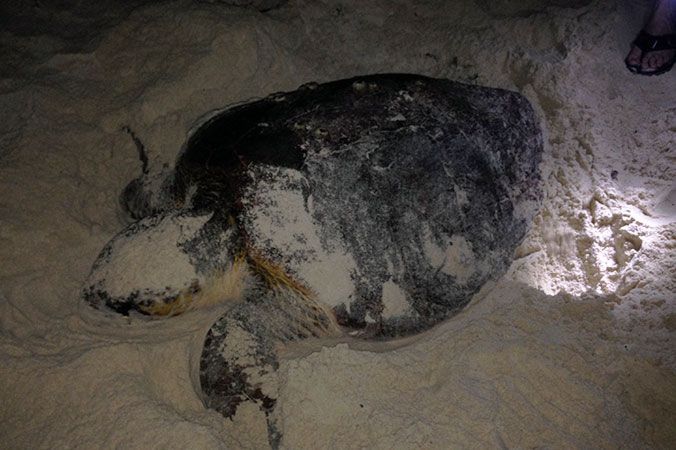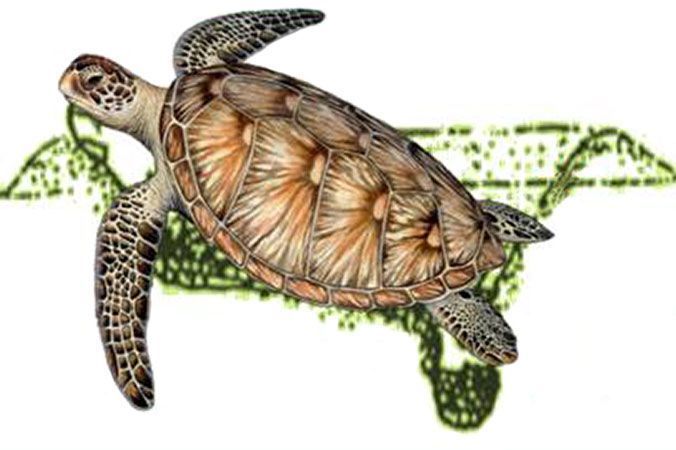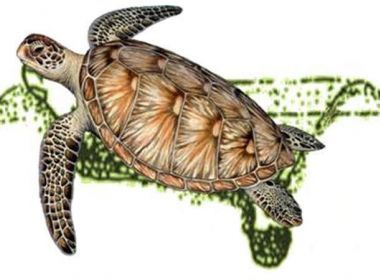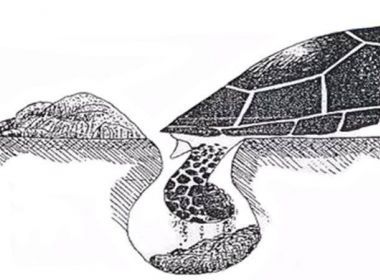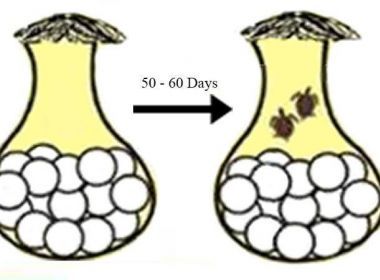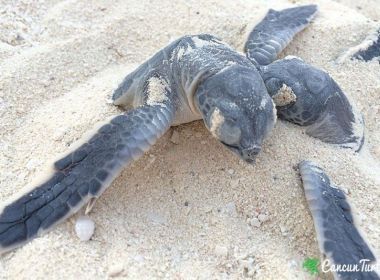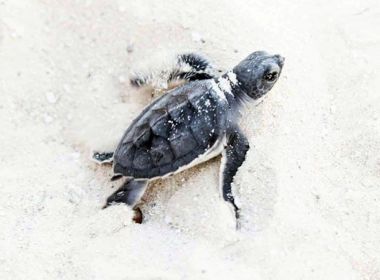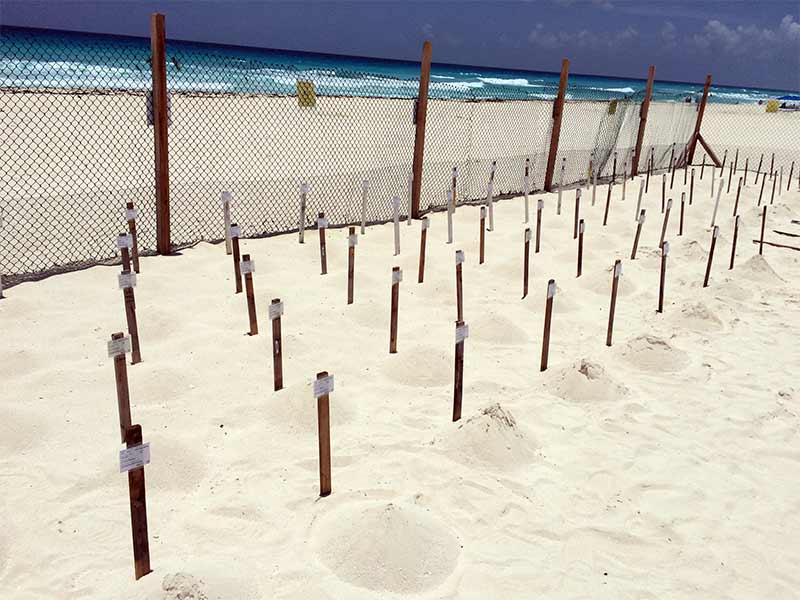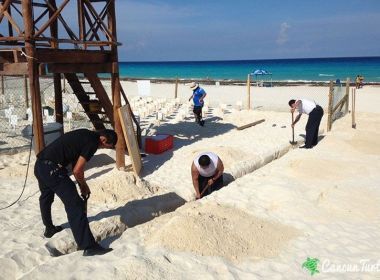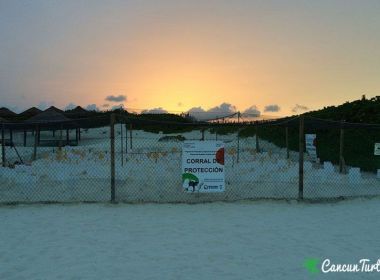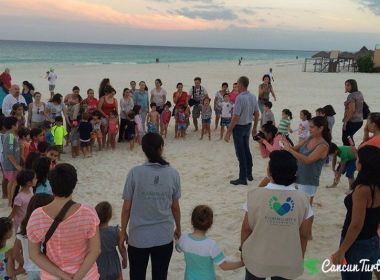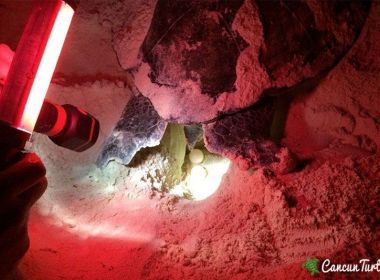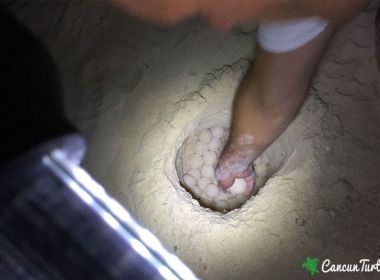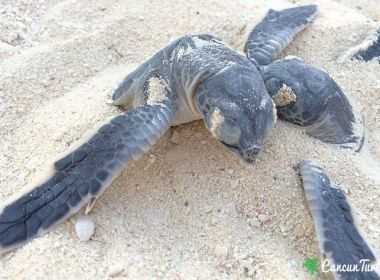A few weeks after mating at sea, female sea turtles are ready to nest and set off to the beach. But not any beach. Most sea turtles return to the beach where they were born decades ago and often nest in the proximity where they last nested.
Most often at night during the northern hemisphere summer months a female sea turtle crawls out of the water onto the beach. Nervously she regularly pauses on her way and carefully looks around as if checking the surroundings and picking the ideal spot for her nest. This behavior present a critical moment. If she feels uncomfortable or is scared by movements, noises or artificial lights, she won’t nest, but return to the sea.
Preparing the Nest
Sea Turtles move slow and perhaps even a little bit clumsy on land. The females are quite wary during the whole nesting process. Even though the singles steps of nesting are the same, it’s really interesting to observe how differently female sea turtles behave when they come on land to deposit their eggs. Some come ashore, crawl just a few meters and immediately start preparing their nest; others move a hundred meters or more inland, where they are often stopped by beachfront hotel walls, fences or terraces, turn around and look for another place or as well leave without having laid their eggs; and still others start preparing the nest at one spot, abandon it, start again at another point and may be in the end only happy with spot 3 or 4.
Anyway when the sea turtle found a good spot for her nest on a dry part of the beach, she starts removing loose sand with her flippers first. Then rotating her body and using her flippers, the female levels out a “body pit”. Afterwards she digs out a tear drop shaped hole in the sand using her rear flippers as shovels. The depth of the hole is determined by the length of the stretched rear flipper; depending on the species and the age of the sea turtle about half a meter to a meter (approx. 1.6 to 3.2 ft.).
Egg Laying
As soon the hole for the eggs is finished, the female begins to lay her eggs. Two or three eggs drop out at a time with a thick, clear mucus being secreted throughout the process. As the eggs are soft-shelled and flexible with a papery to leathery texture, they don’t break when falling into the hole.
Even though many people think that sea turtles go into kind of a trance while egg laying and won’t notice anything that’s going on around them, that’s not entirely true. When the female senses danger or feels harassed, she will abandon their nest.
Once the sea turtle laid all her eggs, she closes the nest with sand using her rear flippers. To disguise her nest she then throws sand in all direction using her front flippers. Only then mom returns to the sea to rest before nesting again later that season or before beginning her migration back to her feeding ground. Once a female left her nest, she never returns to care for it.
Incubation
Sea turtle eggs have an incubation time of approx. 50 to 60 days. The warmer the sand the quicker the embryos can develop or vice versa the cooler the sand the longer it can take until the hatchlings emerge.
The temperature of the sand as well determines the sex of the baby sea turtles. Warmer sand temperatures produce more or all female hatchlings, while cooler sand temperatures produce more or all male hatchlings. At a temperature of around 29° C (82° F) equal numbers of male and female hatchlings are produced.
Leaving the Nest
About 15 to 20 days before the hatchlings emerge from the nest the tiny babies break open their egg shell with a sharp egg tooth. While sticking out their heads out of the shell, their bodies still stay inside the egg shell consuming the egg yolk through their belly button. When the egg yolk is nearly consumed, they free themselves from the egg shell and crawl to the edges of the nest. Together with their brothers and sisters they stay put there for another few days.
As mom is not around the sea turtle hatchlings have to free themselves from their underground nest. So as soon they are ready they dig themselves out of the nest in a joint effort. Usually in the evening or night hours they emerge from the nest together and by orientating themselves to the brightest horizon, they scuttle towards the sea.
The short way from the nest to the ocean is probably the most dangerous time of the hatchlings life. Artificial lights on the beach distract the baby sea turtles; predators patrol the beach for a little sea turtle snack; beach furniture, sand castle and holes can be lethal traps for the tiny sea turtles; and if they are not quick enough they may die from dehydration.
Once the hatchlings reach the water they swim offshore where they are caught in currents and seaweed. For the next 5 to 10 years they are drifting in the open ocean currents, feeding and growing before moving to coastal feeding areas where they, except for their breeding migrations, stay the rest of their lives.
The Process in Pictures


